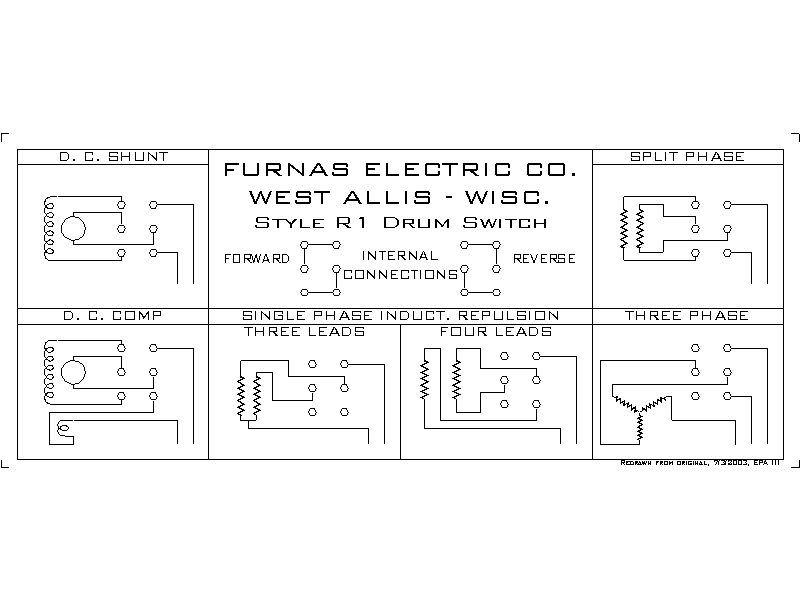JWPage
Aluminum
- Joined
- Apr 12, 2010
- Location
- Northern California, USA
So I keep moving on with my rebuild on my 16" lathe, and decided to take a look at the drum switch. I noticed that 1/2 the mounting points were broken off, and surprised that it didn't short out.
So started looking for a replacement. Short story. Can't find the thing.
Went to my local electrical supplier, he was no help. Grainger, they tried but only had reversing drum switches.
This is what I have.
1 phase 220 supply.
A motor that has only two wires coming out of it.
220 supply SWITCH MOTOR
WHITE------------------1 A------------------------p
GREEN------------------2 B--------no connect B (motor wiring)
BLACK------------------3 C-------------------------P
I have a 3 position switch left, center, right.
Center all power disconected,
Left (high speed) 1=A, 2=B, and 3=C Full 220 to motor.
Right (low speed) 1=A, 2=C, and 3=B only 120 to motor, so it runs at 1/2 speed.
Questions: Is this correct? As the "B" wire was just hanging there and not connectted to anything. If it was it would cause a short.
Does anybody no where to find a replacement switch?
Thanks always.
So started looking for a replacement. Short story. Can't find the thing.
Went to my local electrical supplier, he was no help. Grainger, they tried but only had reversing drum switches.
This is what I have.
1 phase 220 supply.
A motor that has only two wires coming out of it.
220 supply SWITCH MOTOR
WHITE------------------1 A------------------------p
GREEN------------------2 B--------no connect B (motor wiring)
BLACK------------------3 C-------------------------P
I have a 3 position switch left, center, right.
Center all power disconected,
Left (high speed) 1=A, 2=B, and 3=C Full 220 to motor.
Right (low speed) 1=A, 2=C, and 3=B only 120 to motor, so it runs at 1/2 speed.
Questions: Is this correct? As the "B" wire was just hanging there and not connectted to anything. If it was it would cause a short.
Does anybody no where to find a replacement switch?
Thanks always.







